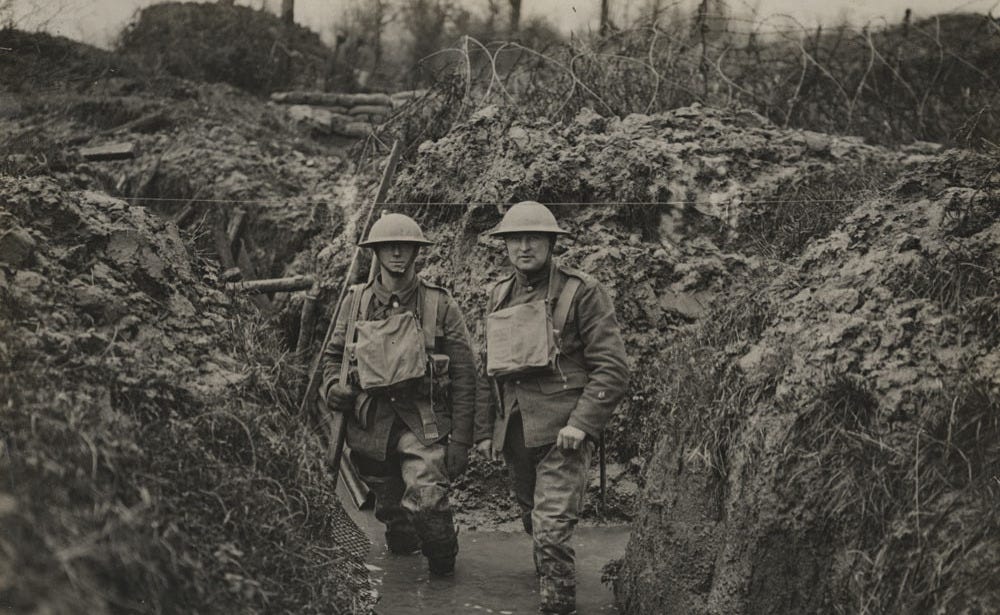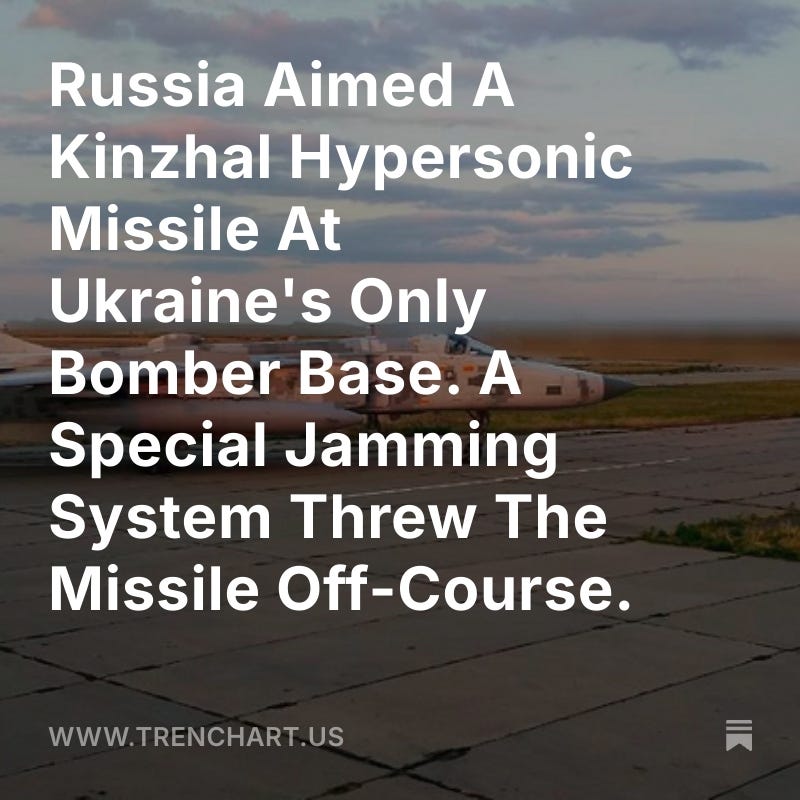Before, There Was 'Shell Shock.' Now Soldiers In Trenches Suffer From Drone-Induced 'FPV Syndrome.'
The fear and paranoia are signatures of a new era of warfare.
by KOSTIANTYN MOISIEIEV
A hundred years ago, on the torn fields of Flanders and in the mud of Verdun, humanity witnessed a crisis in the art of war. World War I, which began with romantic visions of swift cavalry charges, colorful uniforms and bayonet attacks, was reduced within months to an industrial-scale slaughter.
Machine guns and rapid-fire artillery made the space between trenches deadly, forcing million strong armies to dig into the earth.
Today, on the slag heaps of Donbas and in the steppes of Zaporizhzhia, we feel the echo of that war. The front line has once again become relatively static, and attempts at large scale mechanized breakthroughs end in catastrophic losses.
Yet the nature of this trench warfare has changed. If in 1916 the stalemate resulted from the inability to protect infantry from overwhelming fire and from the absence of mobile communications, today’s positional warfare is the result of total battlefield transparency caused by the prevalence of drones.
We have moved from an era in which the “fog of war” concealed the maneuvers of entire corps to an era of a “transparent battlefield,” where even the smallest concentration of forces is quickly detected and destroyed.
Over a century, humanity has traveled the path from bayonet assaults to drone swarm attacks. The essence of war has not changed, but its instruments have become faster, more precise—and far more dangerous.
World War I became a historic turning point because defensive technologies overtook offensive ones for the first time.
The bayonet gave way to artillery, which created uninterrupted barrages and forced armies into trenches. A communications gap emerged: headquarters planned grand operations but lost control of their troops at the moment of attack. Wired communication functioned reliably only in defense. This period also saw the birth of electronic intelligence based on signal interception.
In World War II this positional deadlock was partially overcome thanks to the combination of the internal combustion engine and wireless communication. Mobile radios in tanks became in some cases more important than the caliber of the gun. They solved the problem of controlling advancing units.
Theories of offensive warfare emerged, centered on speed and real-time coordination. Maneuver once again became the king of the battlefield, enabling entire armies to be encircled instead of attacked head on.
World War II differed from modern wars in its low accuracy of weapons. Strategic bombing campaigns by the Allies or artillery waves of the Red Army worked by destroying whole square kilometers.
It was a war of industrial economies: victory went to the side that could produce more tanks, aircraft, bombs and shells than the enemy could destroy. At the same time, radar and electronic warfare systems played a key role in the “battle of beams” between Britain and Germany, marking the first systemic war over navigation and detection.
By the late 20th century, armies developed the illusion of a “contactless war,” born from the success of Operation Desert Storm. According to this doctrine, victory was expected through air power, which was believed to guarantee rapid defeat of the enemy.
The drone era
This paradigm lasted nearly 30 years until the 2020 Nagorno Karabakh war delivered the first major blow to it. Azerbaijan quickly proved that cheap drones negate advantages in armor and outdated air defense systems. It signaled the dawn of an era of robotic aerial killers—an era Russia failed to appreciate at the outset of its full-scale invasion of Ukraine.
The most significant development and experience in the use of unmanned systems and electronic warfare came with the start of the large scale Russia-Ukraine war. The Ukrainian army integrated civilian and military technologies into a single network. The situational awareness systems “Delta” and “Kropyva” reduced the time from target detection to firing from dozens of minutes to nearly seconds.
This created a phenomenon of a “transparent battlefield.” Maneuvering large formations became impossible, forcing troops to disperse. Logistics became “capillary” and lost its centralized structure.
But drone warfare itself didn’t stand still. Early in the war, Bayraktar TB-2 drones were effective, but they are now vulnerable to layered air defenses. First-person-view drones and loitering munitions have taken center stage. Cheap kamikaze drones replaced scarce artillery shells and began striking equipment and personnel with surgical precision.
The Russia-Ukraine war became the first conflict in which both sides have actively relied on artificial intelligence to increase drone autonomy, given the growing use of electronic warfare across the front.
Meanwhile, E.W. systems descended from the strategic level to the trenches. The Pokrova system and other trench-level E.W. complexes became not a luxury but a necessity for survival. A tactic emerged of hunting drone operators by locating their control signals.
Thus, the “shell shock” of World War I has transformed into an “FPV syndrome,” expressed as constant anxiety under around-the-clock aerial surveillance.
It’s going to get worse. The coming era of A.I. will gradually push humans out of the control loop—and create whole new technological challenges.
Kostiantyn Moisieiev is the co-founder and CEO of Cascade LLC, which develops battlefield-proven electronic warfare and radio-frequency solutions including Lima EW.




